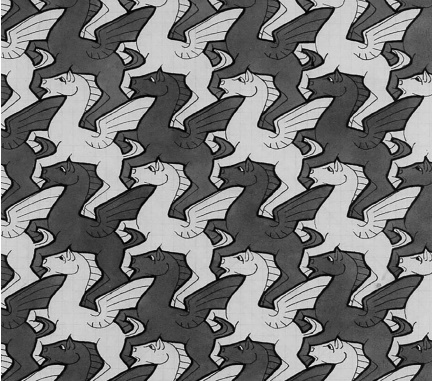Metamorphosis Tessellation through the Still Image Art by Maurits Cornelis Escher
DOI:
https://doi.org/10.69598/sbjfa204848Keywords:
Tessellation, Still Image, MetamorphosisAbstract
The objective of this article is to analyze the concept of Metamorphosis Tessellation
through the still image art by Maurits Cornelis Escher. This study is mainly focused on
his artworks of “Metamorphosis I, 1937” and “Metamorphosis II, 1940” which featured
the metamorphosis concept - changing of the forms from one form to another -
along with the Tessellation to demonstrate the form changes in the selected artworks.
The result shows that the artist systematically created and applied 2-dimensional Tessellation on common forms to conform to the concept of Metamorphosis by utilizing 4
types of basic geometric transformations: (1) the translation symmetry, (2) the reflection
symmetry, (3) the rotation symmetry, and (4) the glide reflection symmetry. This concept of applying geometric methods in the artistic field can be called “Mathematical Arts”. The crossover between the aesthetics and mathematics in this case study of
Escher’s Metamorphosis Tessellations is a significant integration of two different fields
which introduces the new knowledge and profitably expands the intellectual circles
Downloads

Published
How to Cite
Issue
Section
License
The journal's editorial team does not have to agree with the views and comments in the author's article, nor are they responsible for the comments.











